The Dragon side bet and Panda side bet for EZ Baccarat have known card counting issues. Recently I received an e-mail from an employee in surveillance at a major casino asking if this was still the case, or if I had retracted my work. I discussed this surprising e-mail in this post. In reviewing the information available on this site, I realized that I did not post any hard data regarding the Dragon and Panda side bets. This post corrects my omission. I will then give a single count that can be used simultaneously for the Dragon and Panda side bets.
This post will not be comprehensive. My work here will assume the standard cut-card position of 14 cards. No other cut-card depths are considered. I thought it may be interesting to the reader to see the hard data that my program prints out. The data will be presented in raw form without interpretation.
First, consider the Dragon side bet. This bet pays 40-to-1 if the Banker hand is a three-card 7 that beats the Player hand. This wager has a baseline house edge of 7.6110%. I give the details for card counting the Dragon side bet in this post.
The following gives the results of a simulation of 100M 8-deck shoes of the card counting system with tags {0,0,0,-1,-1,-1,-1,2,2,0}: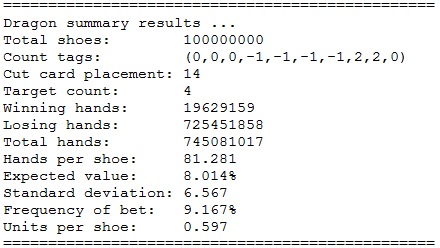
Next, consider the Panda side bet. This bet pays 25-to-1 if the Player hand is a three-card 8 that beats the Banker hand. This wager has a baseline house edge of 10.1876%. Michael Shackleford discussed card counting the Panda side bet in this post.
The following gives the results of a simulation of 100M 8-deck shoes of the card counting system with tags {1,1,-2,-2,-2,-1,-1,-2,4,1}: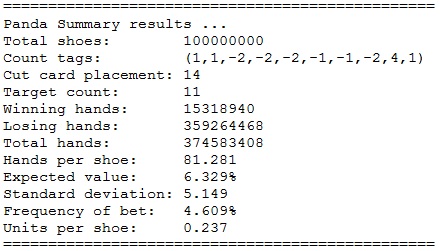
Recently, Stephen How gave a method for simultaneously counting both the Dragon and Panda side bets. To do this, he introduced a side count to be applied on top of the Dragon count. He discusses his method in this post.
In theory, the maximum win-rate possible for the counter who is playing both the Dragon and Panda side bets is 0.597 + 0.237 = 0.834 units per shoe. However, the two counts would be very challenging to carry on in practice. I considered if it was possible to use a single system that captured a piece of both the Dragon and Panda side bets in a fashion that gave an overall better return. My target was to create a single card counting system to improve on the 0.597 units per shoe for the Dragon side bet alone.
I attempted to use some EOR analysis and weighting to come up with this dual-purpose card counting system. But in the end, I just tried a lot of different systems that balanced the two systems above. This turned out to be a challenging investigation, and the final result was hardly satisfying. The Dragon system above can be used for the Panda bet as well, but the benefit is microscopic. I found two other systems that improved the overall results for the player.
The following table summarizes the balanced card counting systems I tried and the units per shoe earned for each system: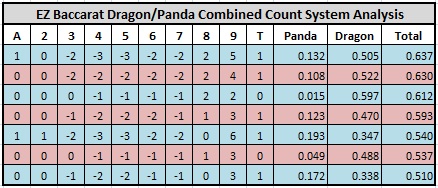
The balanced system with tags (1,0,-2,-3,-3,-2,-2,2,5,1) returns 0.637 units per shoe. This is an improvement of 0.040 units per shoe over playing the Dragon alone. With a $100 wager, this system will return an extra $4 per shoe to the card counter.
The following tables give full details for the Dragon and Panda side bets for this system: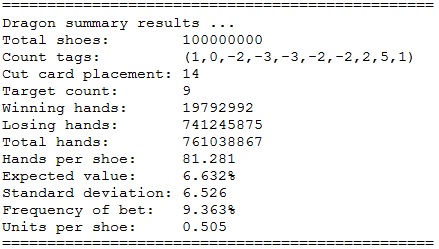
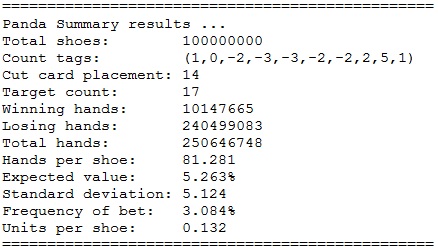
Casinos should continue to watch for APs who may be card counting these side bets. The best defense is to place the cut-card at least 26 cards from the end of the shoe. The worst defense is to pretend this issue doesn't exist.


